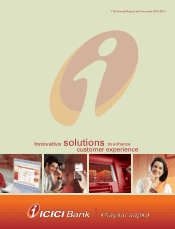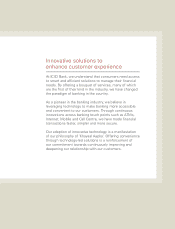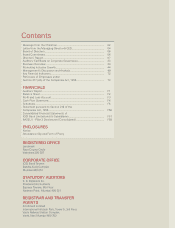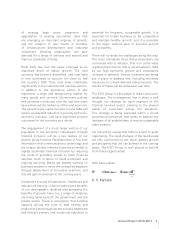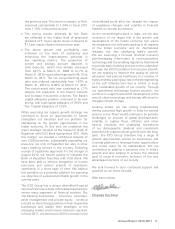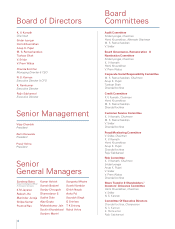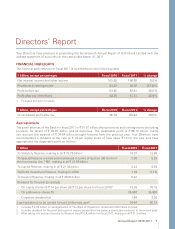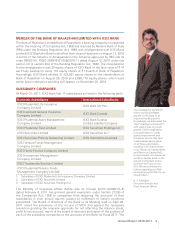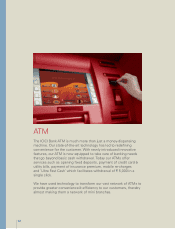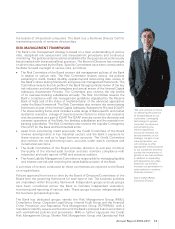ICICI Bank 2011 Annual Report Download - page 5
Download and view the complete annual report
Please find page 5 of the 2011 ICICI Bank annual report below. You can navigate through the pages in the report by either clicking on the pages listed below, or by using the keyword search tool below to find specific information within the annual report.
of existing large cities; expansion and
upgradation of existing second-tier cities that
are emerging as important engines of growth;
and the creation of new towns in corridors
of infrastructure development and industrial
investment. Growing urbanisation will spur
demand for a range of services and sectors and
improve standards of living.
Rural India has over the years emerged as an
important driver of India’s growth. The rural
economy has become diversified, and rural India
is now estimated to account for close to half
the country’s GDP. Thus, rural India contributes
significantly to the industrial and services sectors,
in addition to the agriculture sector. It also
represents a large and fast-growing market for
many goods and services. Government policies
and schemes introduced over the last few years
have enhanced the resilience of the rural economy.
The growth in per capita incomes in rural India will
lead to accelerated reduction in poverty and socio-
economic inclusion, and have significant positive
outcomes for the economy as a whole.
The engagement of a much larger section of our
population in the economic mainstream through
financial inclusion will be a key feature of our
growth going forward. Developments in low-cost
information and communications technology and
the unique identity initiative have the potential to
rapidly accelerate financial inclusion by reducing
the costs of providing access to basic financial
services, both in terms of initial enrolment and
ongoing servicing. Banks are already working on
business models to serve the un-banked segment
through deployment of innovative solutions, and
this will gain momentum in the coming years.
Investment in social infrastructure – healthcare and
education & training – is key to realising the benefits
of our demographic dividend and spreading the
benefits of growth. Here too, a range of initiatives
are being taken by both the government and the
private sector. There is recognition that building
capacity among the poor to lead healthy and
productive lives through access to basic healthcare
and relevant primary and vocational education is
essential for long-term, sustainable growth. It is
essential for Indian business to be competitive
and maintain healthy growth; and it is essential
to the larger national goal of inclusive growth
and prosperity.
There will no doubt be challenges along the way.
The most immediate issue that policymakers are
concerned with is inflation. This is in some ways
a global phenomenon that is accentuated in India
by our high economic growth and consequent
increase in demand. Various measures are being
put in place to address this, including monetary
measures to contain demand side pressures. The
results of these will be witnessed over time.
The ICICI Group is a key player in India’s economic
landscape. The management has in place a well
thought out strategy for each segment of the
financial services sector, catering to the diverse
needs of customers across the spectrum.
This strategy is being executed within a sound
governance framework that seeks to balance the
interests of all stakeholders to ensure sustainable
value creation.
Let me end by saying that India is a land of great
opportunity. The rapid changes of the last decade
are only a precursor to the much greater growth
and prosperity that we can achieve in the coming
years. The ICICI Group is well placed to benefit
from these opportunities.
With best wishes,
K. V. Kamath
Annual Report 2010-2011 3

